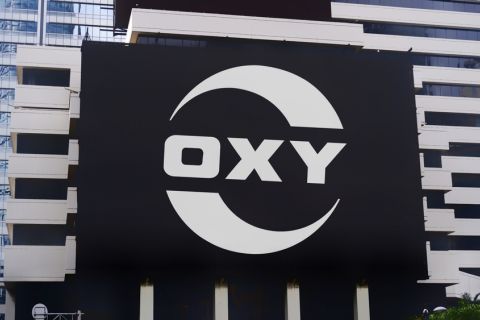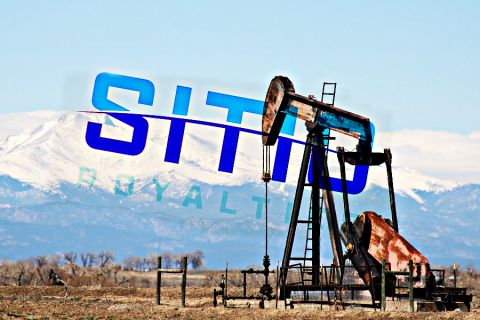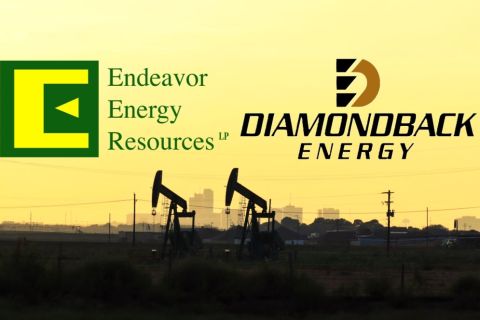It was hard not to love upstream equities last year. Almost all of them outperformed investors' expectations, driven to new heights by oil-supply worries and soaring natural gas prices, not to mention the overall rise in the U.S. stock market. The S&P 500 rose 26.4% and the Nasdaq composite was up 50%. Within their universe, energy stocks gave investors a great ride. "The bear went over the mountain and 333 oils bulled their way to gains versus only 26 losers," say analysts at John S. Herold Inc., the Norwalk, Connecticut-based energy research firm in their annual year-end review of upstream stock returns. At year-end 2003, they looked at 359 publicly held oil and gas companies, trusts, master limited partnerships and oil-service firms. "When the apple came down at midnight, shares of 76 companies were twice the price of the prior year," say the analysts, Robert E. Gillon, Nicholas Cacchione and Mark Caruso. They caution, however, that the pace of producers' stock gains during the past two years is probably not sustainable, even if commodity prices stay where they are. The backdrop for 2003 was unusually good. North American gas prices were 50% higher than in 2002; the Henry Hub price averaged almost $5.50 per million Btu for most of the year. Meanwhile, West Texas Intermediate averaged just over $31 per barrel in 2003, the highest full-year average since the early 1980s-and the fourth year in a row that oil has averaged more than $25. Smaller-cap producers outperformed the larger companies in all energy industry sectors from independents to integrateds to oil-service companies. "As would be expected, E&P shares had phenomenal years, with median gains for the group ranging from 25.5% for large domestic producers to 96.5% for small domestics," the Herold analysts report. "It is clear that size is no longer perceived as an advantage in generating value for shareholders." The best small-cap gainers were Ivanhoe Energy (Nasdaq: IVAN) and National Energy Group (OTC: NEGI). Ivanhoe's stock price soared 731% on speculation that its onshore China acreage may hold huge reserves of natural gas, and National Energy Group gained 712% following its second restructuring out of bankruptcy in the past five years. The best-performing U.S. large-cap was Patina Oil & Gas (NYSE: POG), whose total return was 94.5%. By December 31, its stock had risen to $48.99 per share from $25.32 the prior year and it paid a dividend of 25 cents per share. The best-performing Canadian independent producer was Canadian Natural Resources for the second straight year, while fellow Canadian Husky Energy Inc. was the top performing North American integrated. Canadian royalty trusts provided double-digit returns for the fifth straight year, and the universe of such companies grew to 34 from 20 as producers continue to convert to the trust format. Some of the publicly traded non-North American firms on the list did very well. For the third consecutive year, returns for integrated oils that trade principally overseas outperformed their U.S. peers, the Herold analysts report. In many cases they were aided by the weak U.S. dollar and surging oil and gas demand in host countries. India's Oil and Natural Gas Corp. topped the large-cap international list with a total return of 148.8%, after leaping 172% in 2002. Among the other international oil giants, PetroChina rose 194.5% and China Petroleum & Chemicals rose $171.6%. The majors did not fare as well on a percentage basis as their smaller colleagues, yet the integrated oils turned in their best year since Herold began this study with 1996 results. Williams Cos. led the group, showing a total return of 265.2%. It was buoyed by significant property sales that helped it avoid catastrophe, but the shares still finished below their level of two years ago. Australia-based BHP Billiton also had top-quartile returns-61.5%. A sell-off on the last day of the year prevented Murphy Oil from being the top-performing U.S. company for a third consecutive year. Its 2003 return was 54.3%. Sadly, notes Herold, there are some consistent laggards, which proves that high commodity prices are not the only factor in a company's performance. Among the large-cap independents, poor performers included Kerr-McGee Corp. with a 9% return, Anadarko Petroleum with 7.4%, and Forest Oil with 3.3%. These three companies ranked on the bottom of the 2002 list as well. Drilling stocks, particularly for offshore contractors, suffered through their third poor showing in the last four years, and the oil-service group had the second-worst performance, the Herold analysts report, compared with other energy industry sectors. "Continued budget restraint by the major oils is taking its toll," the analysts conclude. -Leslie Haines
Recommended Reading
Enterprise Buys Assets from Occidental’s Western Midstream
2024-02-22 - Enterprise bought Western’s 20% interest in Whitethorn and Western’s 25% interest in two NGL fractionators located in Mont Belvieu, Texas.
Report: Occidental Eyes Sale of Western Midstream to Reduce Debt
2024-02-20 - Occidental is reportedly considering a sale of pipeline operator Western Midstream Partners as the E&P works to close a $12 billion deal in the Permian Basin.
Sitio Royalties Dives Deeper in D-J with $150MM Acquisition
2024-02-29 - Sitio Royalties is deepening its roots in the D-J Basin with a $150 million acquisition—citing regulatory certainty over future development activity in Colorado.
Analysts: Diamondback-Endeavor Deal Creates New Permian Super Independent
2024-02-12 - The tie-up between Diamondback Energy and Endeavor Energy—two of the Permian’s top oil producers—is expected to create a new “super-independent” E&P with a market value north of $50 billion.
E&P Highlights: Feb. 12, 2024
2024-02-12 - Here’s a roundup of the latest E&P headlines, including more hydrocarbons found offshore Namibia near the Venus discovery and a host of new contract awards.





